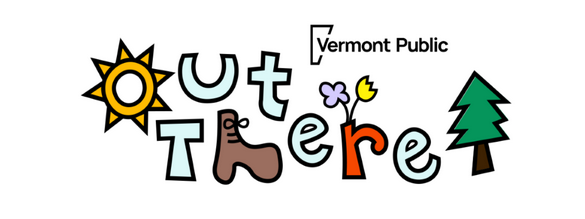This is the web version of our email newsletter, Out There! Sign up to get our weekly dose of all things environment — from creatures you might encounter on your next stroll, to a critical look at the state's energy transition, plus local outdoor events.
It’s Thursday, July 6. Here’s what’s on deck:
- Good year for trees (bad year for spongy moth caterpillars)
- Baby bird season
- Making solar more accessible
Advice for when air quality is questionable

Occasional smoky days are going to be part of life in Vermont this summer, as wildfires continue to rage in Quebec.
It’s worth paying attention to because smoke is full of chemicals that aren’t good for your body: carbon monoxide, polycyclic aromatic hydrocarbons (also found in car exhaust), and really tiny particles called PM2.5. Those can get deep into your lungs and bloodstream. Smoky air can give you a scratchy throat, eye irritation, headaches, trouble breathing, and have long-term impacts on your health. Here are some tips for avoiding exposure on hazy days:
- 🔎 Check the air quality in your town. This is often measured in “AQI” or air quality index. The index runs from 0 to 500 (and shows up as green to maroon on maps from the EPA); higher numbers are worse.
- 🟠 Once AQI is above 100, certain people who are sensitive to air pollution could experience health effects, especially kids, teenagers and older adults
- 🔴 Above 150, and anyone might experience health effects
- 🟣 Above 200 is considered “very unhealthy” by the EPA
- 🏠 In your home, keep the windows shut.
- If you don’t have AC, the EPA has a few tips for creating air filters from box fans
- If it’s hot and you have AC, run it on a setting that recirculates air in your home, or use a window unit (this offers more filtration than an open window)
- 🚗 If you’re driving, roll up your windows and use AC on the recirculate setting.
- 🚶 Consider shortening the intensity and length of outdoor exercise (like going for a walk instead of a run).
- 😷 A N95 or P100 mask can help reduce exposure if you have to spend time outdoors (but not as much as staying indoors, so think of this as a last resort).
And lots more info in our guide.
Got more questions? We’d love to follow up with you. Email us or ask away, here!
In other news...
🌳 Tree canopies are looking good this year. For the past two summers, spongy moth caterpillars have defoliated nearly 100,000 acres in Vermont (or about 1.5% of the state), which not only looks terrible, but also can sicken trees. This year, damage from the pests has been nearly nonexistent. That’s thanks, in part, to the combination of a fungus and a virus.
🐥 It’s baby bird season, which means it’s a busy time for wildlife rehab centers that take care of injured and orphaned birds. But for over a year, there’s been one group of birds many rehabbers haven’t been able to see: waterfowl – specifically adult ducks, geese, and gulls. That’s because avian flu is still present in wildlife, and the virus can spread without being detected in those types of birds.
☀️ More solar panels for low-income households: Last week, state and federal officials announced new funding for a program that tries to make solar power more affordable. The EPA’s new Solar for All program sets aside $7 billion for lower-income households across the nation to install rooftop solar. Sen.Bernie Sanders says the program could help reduce households' electricity bills by 80-90% percent.
In your backyard

Get out there
🗑️ Help clean a river in a canoe: Join the Missisquoi River Basin Association this Saturday morning in Enosburg to help cleanup the river. Volunteers will gather at the Enosburg Dam and then paddle downstream to help remove garbage from the river.
🔦 Discover nocturnal bugs: Have you always wanted to use a black light to watch insects explore the dark hours of the night? Well, look no further. The Middlebury Area Land Trust is holding a Nocturnal Bugs & Insects event this coming Saturday evening – and it’s free.
🚵 Mountain biking clinic is back: If you are looking to build your mountain biking skills, the Craftsbury Outdoor Center is offering an introductory clinic and group ride for women and nonbinary folks next Thursday, July 13th. Participants do not need any previous mountain biking experience. The clinic fee is $15.
☀️ Your turn: What do you like to do to get outside during Vermont summers? Tell us about your favorite spot or summer pastime, and we’ll feature it in this newsletter later this month.
Before you go:

Visualizing climate change in Vermont: Scientists in the U.K. crunched the numbers and came up with a graphic to show how annual temperatures in Vermont have changed relative to averages from 1971 to 2000.
Thanks for reading! If you have ideas for events we should feature, critters, fungi or plants you want to learn more about, or other feedback, we'd love to hear from you! Just email us.
Credits: This week’s edition was put together by Lexi Krupp, Joia Putnoi, Abagael Giles, Adiah Gholston and edited by Brittany Patterson, with lots of help from the Vermont Public team, including graphics by Laura Nakasaka and Sophie Stephens. Thanks to Desiree Narango from the Vermont Center for Ecostudies for sharing her expertise on oak trees.





